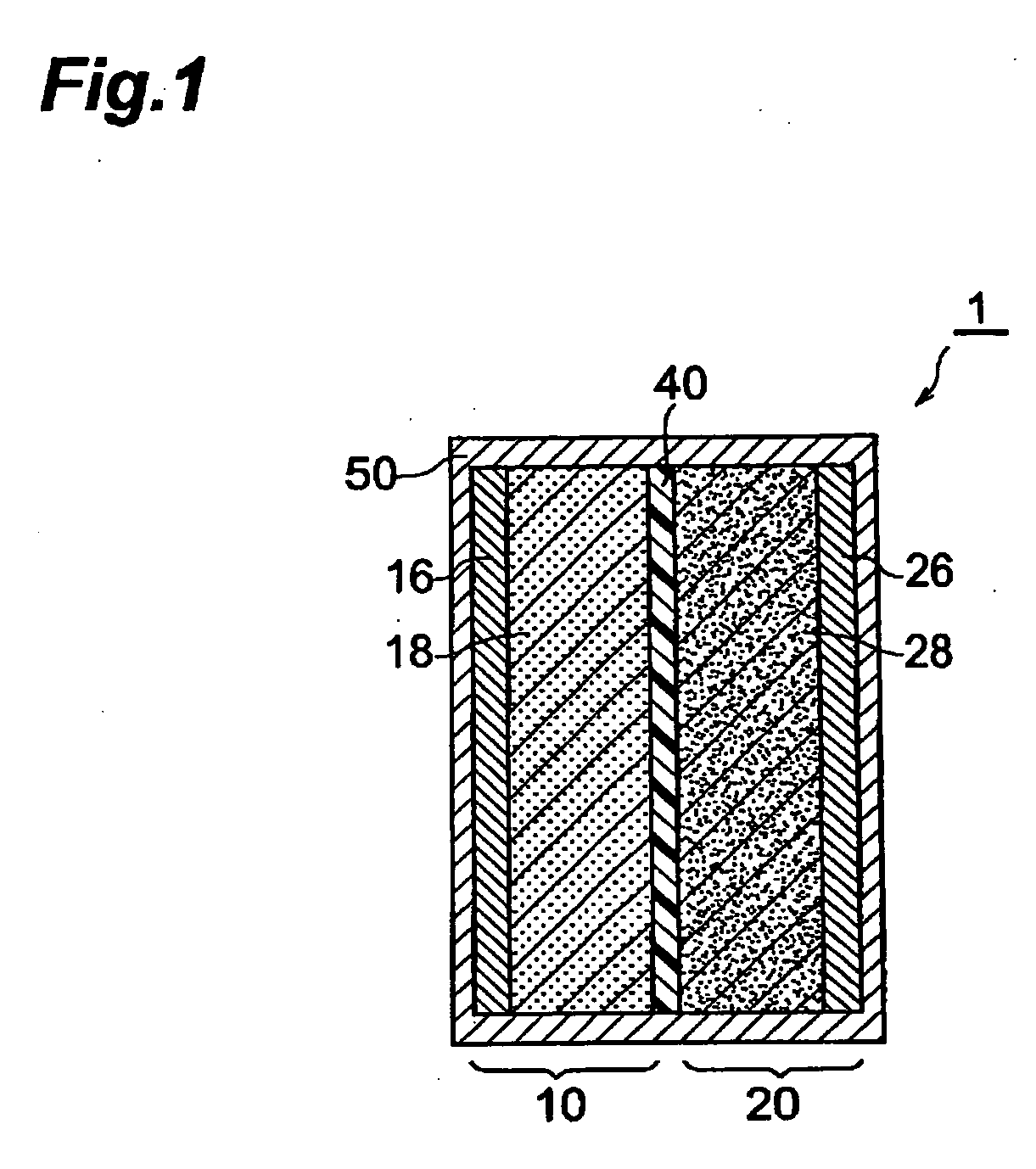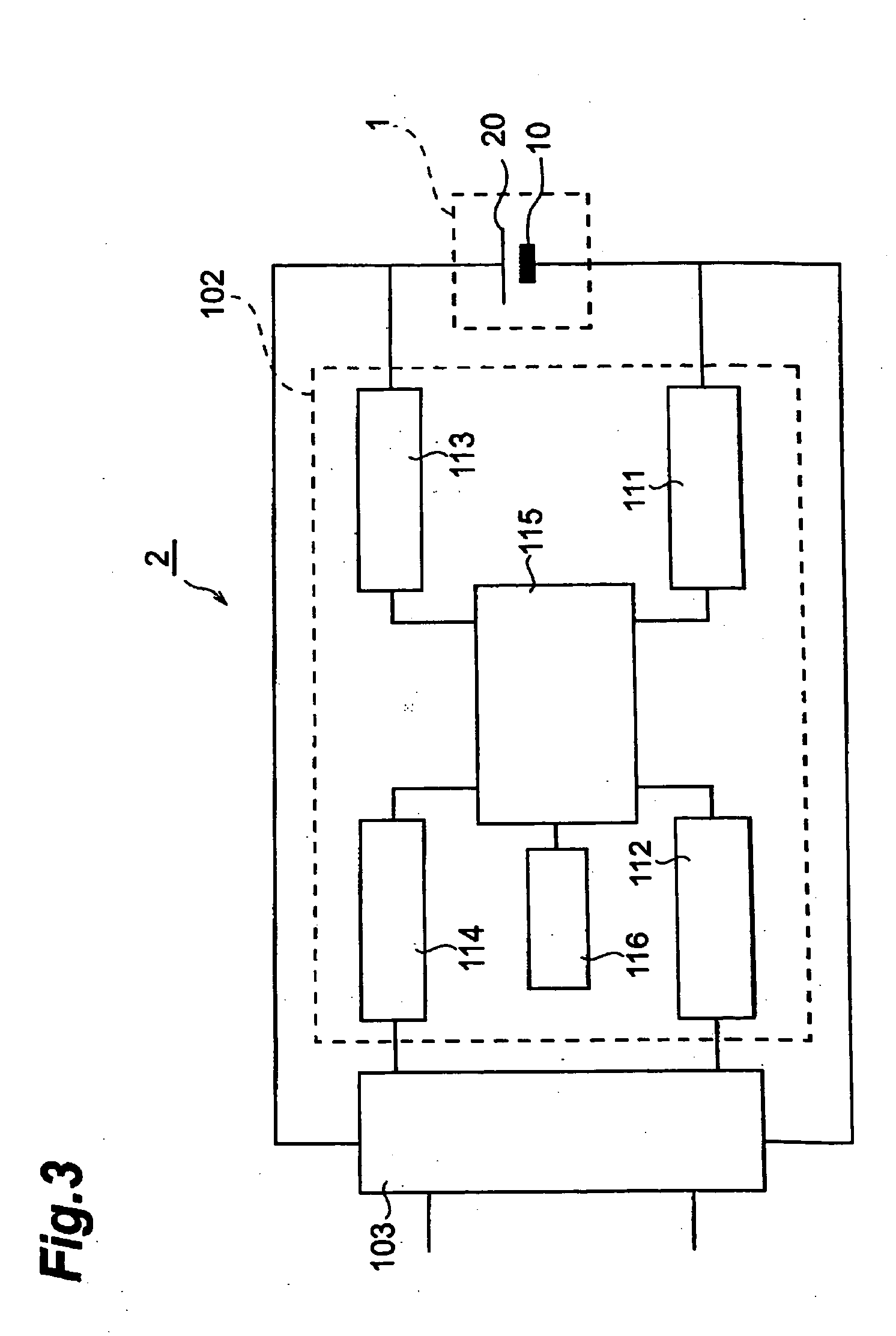Method of charging lithium ion secondary battery, charging apparatus, and power supply apparatus
a lithium ion secondary battery and charging apparatus technology, applied in secondary cell servicing/maintenance, cell components, electrochemical generators, etc., can solve the problems of deteriorating charging/discharging characteristics, long time to charge the batteries completely, and broken lattices
- Summary
- Abstract
- Description
- Claims
- Application Information
AI Technical Summary
Benefits of technology
Problems solved by technology
Method used
Image
Examples
example 1
[0114] A negative electrode was made. First, synthetic graphite (90 mass parts) as a negative electrode active material, carbon black (2 mass parts) as a conductive auxiliary agent, and polyvinylidene fluoride (PVDF) (8 mass parts) as a binder were mixed by a planetary mixer, and the viscosity of the mixture was adjusted with an; appropriate amount of N-methylpyrrolidone (NMP) as a solvent, so as to yield a slurry. Thus obtained slurry was applied to an electrolytic copper foil (16 μm), acting as a collector, by doctor blading such that the negative electrode active material carrying amount became 14.5 mg / cm2, and then was dried at 110° C. for 20 minutes, so as to form a negative electrode active material containing layer. After drying, the layer was extended by calender rolls such that the resulting negative electrode attained a porosity of 30%, and then was punched out into a piece of 17.5 mm×32.5 mm, whereby the negative electrode was obtained.
[0115] Next, a positive electrode w...
example 2
[0119] A lithium ion secondary battery (having a rated capacity of 100 mAh) was made as in Example 1 except that the positive electrode active material carrying amount was 8.0 mg / cm2, and that the negative electrode active material carrying amount was 4.5 mg / cm2.
[0120] Thus obtained lithium ion secondary battery was subjected to constant current charging at a current value (500 mA) corresponding to a charging current value of 5C at 25° C. until the voltage value became 4.5 V, and the time required for attaining full charge was measured. Next, constant current discharging was performed at 1C until the voltage value became 2.5 V, and a discharging capacity A1 was measured. Further, a discharging capacity A2 was measured after repeating the charging and discharging 10 times under the same condition, and a charging / discharging cycle characteristic was evaluated as in Example 1. Results obtained are shown in Table 1.
example 3
[0121] A lithium ion secondary battery (having a rated capacity of 100 mAh) was made as in Example 1 except that the positive electrode active material carrying amount was 5.5 mg / cm2, and that the negative electrode active material carrying amount was 3.5 mg / cm2.
[0122] Thus obtained lithium ion secondary battery was subjected to constant current charging at a current value, (1000 mA) corresponding to a charging current value of 10C at 25° C. until the voltage value became 4.5 V, and the time required for attaining full charge was measured. Next, constant current discharging was performed at 1C until the voltage value became 2.5 V, and a discharging capacity A1 was measured. Further, a discharging capacity A2 was measured after repeating the charging and discharging 10 times under the same condition, and a charging / discharging cycle characteristic was evaluated as in Example 1. Thus obtained results are shown in Table 1.
PUM
 Login to View More
Login to View More Abstract
Description
Claims
Application Information
 Login to View More
Login to View More - R&D
- Intellectual Property
- Life Sciences
- Materials
- Tech Scout
- Unparalleled Data Quality
- Higher Quality Content
- 60% Fewer Hallucinations
Browse by: Latest US Patents, China's latest patents, Technical Efficacy Thesaurus, Application Domain, Technology Topic, Popular Technical Reports.
© 2025 PatSnap. All rights reserved.Legal|Privacy policy|Modern Slavery Act Transparency Statement|Sitemap|About US| Contact US: help@patsnap.com



